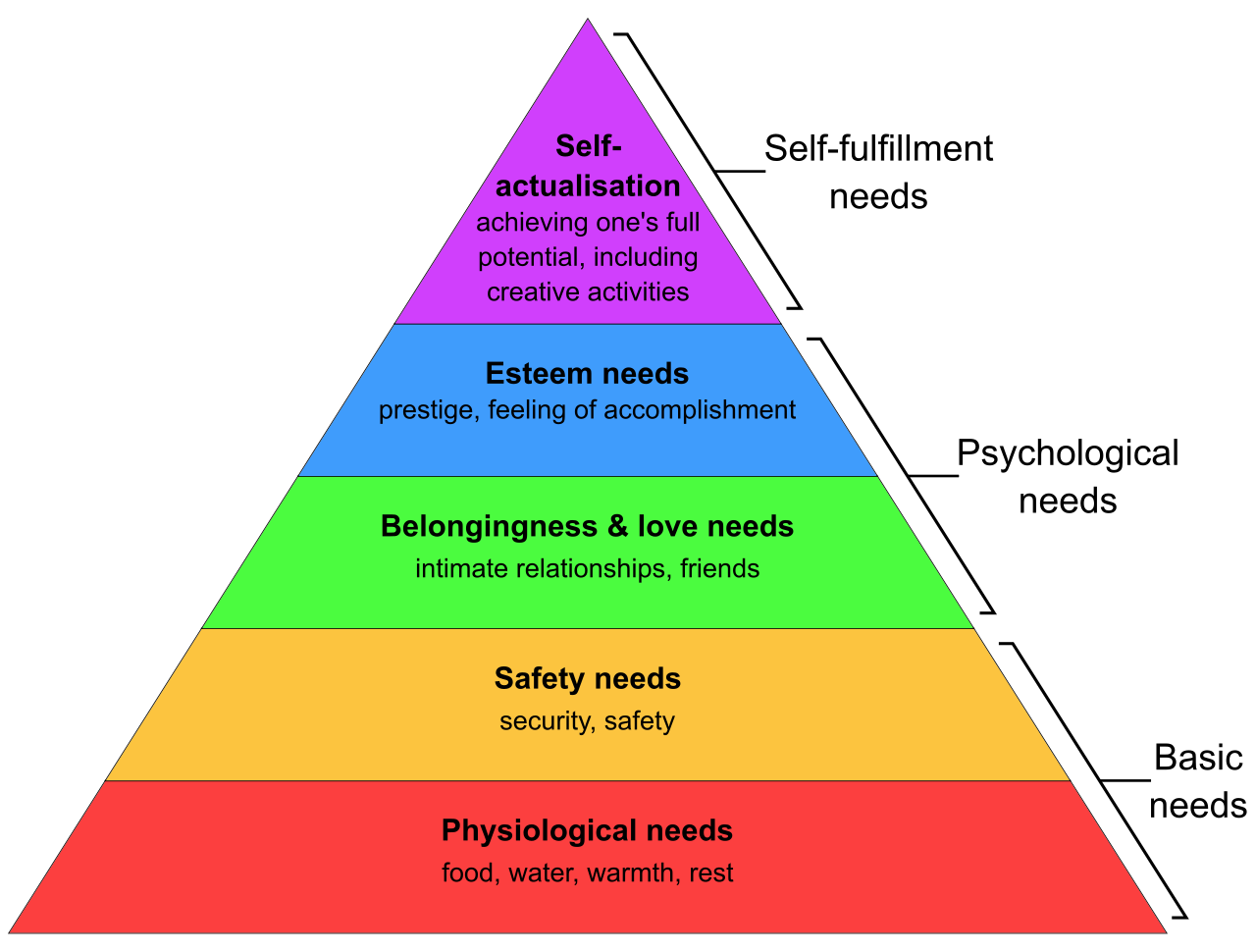The Pursuit of Self ACTUALISATION: Unraveling Maslow’s hierarchy of needs
Self-actualisation, a concept popularised by psychologist Abraham Maslow in the mid-20th century, is a term that has permeated discussions on human potential, motivation, and personal development. It represents the pinnacle of human growth and fulfillment, but what exactly does it mean, and how can we reach this state of being? Let’s delve deep into self-actualisation, exploring Maslow’s Hierarchy of Needs and referencing articles and websites to provide a comprehensive understanding of this psychological framework.
Maslow’s Hierarchy of Needs
Before we can embark on the journey of self-actualisation, it is essential to understand the foundation upon which Maslow’s concept is built – the Hierarchy of Needs. This framework, often depicted as a pyramid, suggests that human needs are hierarchical, with basic physiological needs at the bottom, and self-actualisation at the pinnacle. The pyramid comprises five levels:
1. Physiological Needs: At the base of the pyramid are our most fundamental needs, such as food, water, shelter, and sleep. Without satisfying these basic needs, it’s difficult to progress up the hierarchy.
2. Safety Needs: Once physiological needs are met, individuals seek safety and security. This includes financial stability, a stable environment, and protection from harm.
3. Love and Belongingness: Above safety, humans crave social connection, love, and a sense of belonging. This involves friendships, intimate relationships, and being part of a community.
4. Esteem Needs: As individuals gain a sense of belonging, they strive for self-esteem and the respect of others. This encompasses self-confidence, recognition, and the desire for a positive self-image.
5. Self-Actualisation: The highest level in the hierarchy is self-actualisation. It is the pursuit of personal growth, fulfillment, and reaching one’s potential. It’s a state where individuals are creative, autonomous, and in tune with their true selves.
Now, let’s explore the concept of self-actualisation in more detail.

Understanding Self-Actualisation
Self-actualisation is a state of being characterised by a deep understanding of one’s self, a sense of purpose, and the pursuit of personal growth. According to Maslow, self-actualised individuals are creative, spontaneous, problem-solving, and motivated by a desire for personal fulfillment rather than external rewards. Achieving self-actualisation is a lifelong journey, and not everyone reaches this level of personal development.
In the pursuit of self-actualisation, one must address and satisfy the lower-level needs first. This means that basic physiological needs, safety, love, and esteem must be established before an individual can fully concentrate on personal growth. Once these needs are met, the focus can shift to self-actualisation.
Self-Actualisation in Practice
Self-actualisation is not a one-size-fits-all concept; it varies from person to person. However, there are common traits and behaviors associated with self-actualised individuals. These include:
1. Autonomy: Self-actualised individuals are self-reliant and independent thinkers. They make decisions based on their values and principles.
2. Creativity: They often have a strong sense of creativity and are drawn to artistic pursuits, problem-solving, and innovation.
3. Continual Growth: Self-actualised individuals are lifelong learners, always seeking personal growth and self-improvement.
4. Authenticity: They are authentic and true to themselves, not concerned with conforming to societal expectations.
5. Peak Experiences: Self-actualised individuals often experience “peak moments” where they feel an intense sense of joy, clarity, and fulfillment.
6. Altruism: They are motivated by a sense of purpose and often engage in activities that benefit others and society as a whole.
To gain a deeper understanding of self-actualisation and Maslow’s Hierarchy of Needs, consider exploring the following articles and websites:
1. “Maslow’s Hierarchy of Needs” by Simply Psychology: – This comprehensive article provides an in-depth overview of Maslow’s Hierarchy of Needs.
2. “Self-Actualisation” by Psychology Today: – This article delves into the concept of self-actualisation, its characteristics, and how to work toward it.
3. “Abraham Maslow: Father of Self-Actualisation” by Positive Psychology Program: – This article discusses the life and work of Abraham Maslow and his contributions to psychology.
4. “The Role of Self-Actualisation in Personal Development” by Verywell Mind: – This article explores how self-actualisation plays a crucial role in personal development.
Essentially, Self-actualisation, situated at the pinnacle of Maslow’s Hierachy of Needs, represents the fulfillment of human potential, personal growht and a deep understandinf oneself. It is a worthile pursuit for anyone seeking a life filled with purpose and personal fulfillment. By acknowleding the foundation of the Hierarchy of Needs and striving for self-actualisation, individuals can embark on a transformative journey toward being the best version of themselves. Click below for Part II of this blog.

Recent Comments